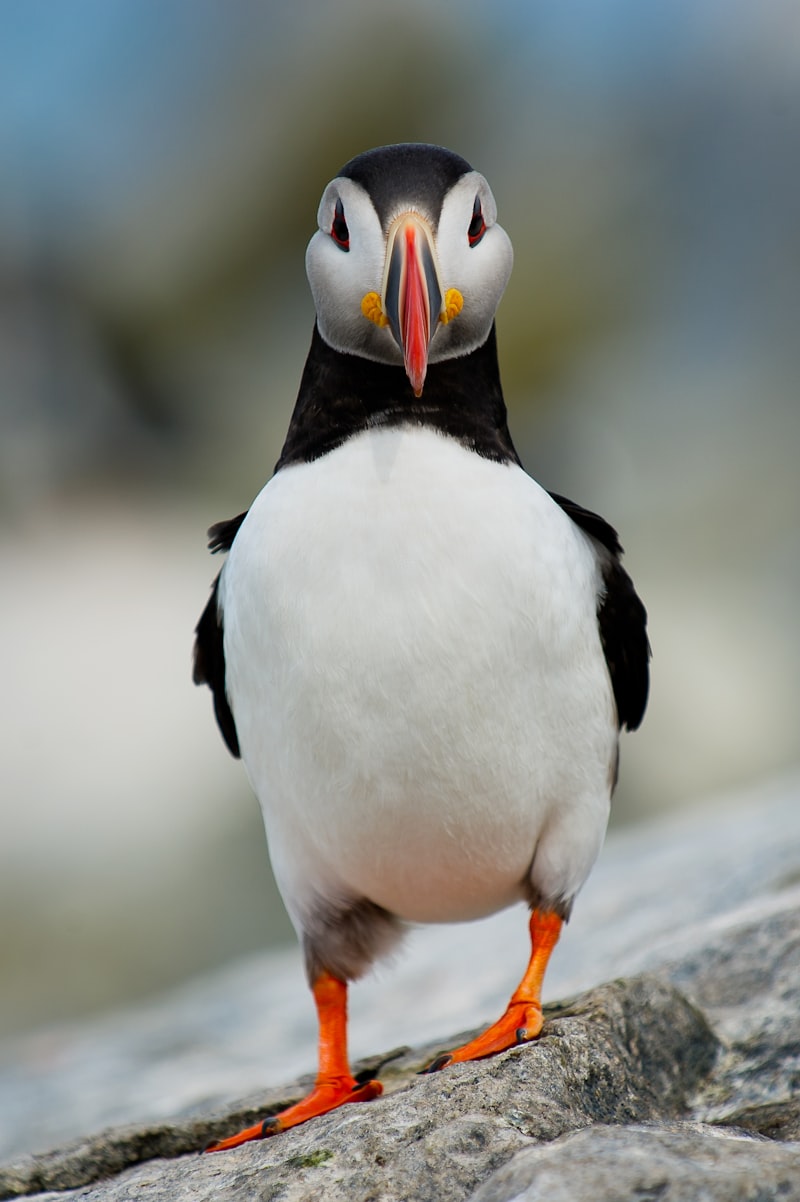Have you ever wondered how birds communicate and interact with each other in their natural habitats? The neurobiology of social interaction in birds unveils fascinating insights into their behaviors and communication patterns. Birds, like humans, are social creatures, and their ability to interact plays a crucial role in survival and breeding success.
At the heart of avian social behavior lies the intricate workings of their brains. Studies have shown that birds possess complex neural circuits dedicated to social cognition. These circuits enable them to recognize individuals, form social bonds, and coordinate group activities. For instance, species such as crows and parrots exhibit remarkable cognitive abilities, including tool use and problem-solving, which are facilitated by their advanced brain structures.
One of the key brain regions involved in social interaction is the avian prefrontal cortex, analogous to the human prefrontal cortex. This region processes social cues, facilitates decision-making related to social behaviors, and regulates responses during interactions. Neurotransmitters such as dopamine and oxytocin also play pivotal roles in modulating social behaviors in birds, influencing their affiliative behaviors and responses to social stimuli.
Interestingly, the neurobiology of social interaction varies across bird species based on their ecological and evolutionary histories. Species living in complex social groups often exhibit larger brain regions associated with social cognition, indicating adaptation to their social lifestyles over evolutionary time.
Understanding the neurobiology of social interaction in birds not only sheds light on their fascinating behaviors but also provides insights into the evolution of social cognition across species. Further research in this field continues to uncover new discoveries, deepening our appreciation for the complexity of avian social lives and their neural underpinnings.
Inside the Avian Brain: How Birds Navigate Social Hierarchies
Ever wondered how birds establish their pecking order? It’s more than just random squabbles over territory or food. In the intricate world of avian social dynamics, everything boils down to hierarchy—a structured ranking that dictates who gets access to resources and mates.
At the heart of this system lies the avian brain, a marvel of evolutionary adaptation. Birds, from the majestic eagles soaring high above to the tiny sparrows chirping in our gardens, possess brains finely tuned to social cues. These cues are crucial in determining their place in the pecking order.
Social hierarchies among birds are often established through a series of interactions that signal dominance or submission. These interactions can range from elaborate courtship displays to aggressive confrontations. For example, in many bird species, males may engage in fierce battles to win the right to mate with females, while females might compete for access to the best nesting sites.
But how do birds process these complex social signals? It all comes down to their highly developed sensory systems. Birds have keen eyesight and acute hearing, allowing them to perceive subtle changes in body language, vocalizations, and even hormonal signals. These sensory abilities enable them to assess the strength, health, and dominance status of other individuals within their social group.
In essence, the avian brain acts as a sophisticated social radar, constantly interpreting and responding to signals from its environment. By understanding these dynamics, researchers gain insights into not only the behavior of individual birds but also the broader ecological interactions within avian communities.
Next time you hear the cheerful chirping of birds outside your window, remember that each tweet and flutter is part of a complex social dance shaped by millions of years of evolution. It’s a reminder of nature’s ingenuity and the remarkable adaptability of our feathered friends in navigating their social world.
The Neurological Dance: Bird Brains and Social Cognition
In the intricate world of animal cognition, birds have long intrigued researchers with their surprisingly complex social behaviors. From intricate mating dances to cooperative foraging, avian species exhibit forms of social cognition that challenge traditional views of intelligence. This phenomenon is particularly evident in the elaborate courtship rituals observed among certain bird species, where precise movements and displays play crucial roles in mate selection.
Bird brains, despite being significantly different from mammalian brains, showcase remarkable neural adaptations that support their social interactions. Neurologically speaking, the avian brain’s capacity for social cognition is tied to specialized areas that process visual and auditory stimuli with high acuity. These adaptations enable birds to recognize individual conspecifics, communicate effectively through vocalizations, and navigate complex social hierarchies within their flocks.

Researchers liken the social interactions of birds to a delicate dance, where each move is a step towards understanding the intricate dynamics of their environment. Just as humans use body language and facial expressions to convey intentions, birds utilize their unique behavioral patterns and vocal signals to convey meaning within their communities. This parallels how dance forms a universal language of expression among humans, transcending verbal communication to convey emotions and intentions.
Furthermore, studying bird social cognition provides valuable insights into the evolution of intelligence and sociality across species. By unraveling the neurological underpinnings of avian behaviors, scientists gain a deeper understanding of the adaptive advantages that social cognition confers in different ecological contexts. This research not only enhances our appreciation for the diversity of life but also underscores the interconnectedness of cognitive abilities across the animal kingdom.
Exploring the neurological dance of bird brains and their social cognition unveils a world where intelligence takes on diverse forms, challenging our perceptions of what it means to be intelligent and social beings in the natural world.
This article aims to engage readers with its conversational tone, using analogies (like comparing bird social interactions to human dance) and rhetorical questions to maintain interest and encourage further exploration of the topic.
Wired for Connection: Neural Pathways in Bird Social Behavior
At the core of bird social behavior are complex neural networks that facilitate communication, cooperation, and even competition within their communities. These neural pathways enable birds to form bonds with mates, establish hierarchies within flocks, and coordinate group activities such as migration and hunting.
One remarkable aspect of avian neural pathways is their adaptability. Birds can quickly learn from their social interactions and adjust their behavior accordingly. This plasticity allows them to thrive in diverse environments, from densely populated urban areas to remote wilderness regions.
In many bird species, social behavior is intricately linked to survival. For example, communal roosting helps birds conserve energy during cold nights, while cooperative breeding allows them to raise offspring more effectively. These behaviors are supported by specialized neural circuits that promote social cohesion and collective decision-making among group members.
Analogous to human societies, bird communities also exhibit cultural transmission of behaviors across generations. Young birds learn essential skills and social norms from experienced individuals, shaping their development and integration into the group.
Understanding the neural underpinnings of bird social behavior not only sheds light on their evolutionary history but also offers insights into broader principles of animal cognition and sociality. By studying these intricate neural pathways, researchers can uncover how birds navigate complex social dynamics, adapt to environmental changes, and contribute to the resilience of their ecosystems.

The study of neural pathways in bird social behavior unveils a world of intricate connections and adaptive behaviors. From communication and cooperation to cultural transmission and survival strategies, birds exemplify the profound influence of neural networks on social interactions within the animal kingdom. As our understanding grows, so too does our appreciation for the complexity and diversity of avian social lives.
From Chirps to Choices: Understanding Decision-Making in Social Birds
One fascinating aspect of decision-making in social birds is their reliance on vocalizations, or chirps, to communicate preferences and intentions. These vocal signals aren’t just random noises; they convey meaningful information about food sources, predators, and even social hierarchies within their flocks. For instance, when a crow emits a specific call while perched on a tree branch, it may be signaling the discovery of a nearby food cache to its fellow crows.
Moreover, social birds demonstrate a keen awareness of their environment and the behaviors of other individuals. They observe and learn from each other, which influences their decision-making processes. In studies, researchers have observed parrots learning to solve puzzles by watching their peers, showcasing a form of social learning that enhances their problem-solving abilities.
Decision-making among social birds isn’t just about survival; it also reflects their social dynamics and relationships. For instance, in some bird species, such as ravens, decisions about mate selection and territory defense are crucial for maintaining social cohesion and reproductive success. These decisions are often made through intricate displays of intelligence and cooperation among group members.
Analogous to human decision-making, social birds weigh various factors when making choices. They assess risks, rewards, and social consequences before committing to a course of action. This ability to evaluate options and anticipate outcomes is vital for their survival in dynamic and sometimes unpredictable environments.
Frequently Asked Questions
How do birds communicate with each other socially?
Birds communicate socially through various vocalizations, body language, and displays. They use calls, songs, and gestures to convey information such as warnings, courtship signals, and group coordination. Communication helps them establish territories, find mates, and coordinate activities like migration.
What are the evolutionary advantages of social behavior in avian species?
Social behavior in avian species offers evolutionary advantages such as enhanced protection from predators through group vigilance, increased foraging efficiency, and improved reproductive success via cooperative breeding and social learning. These benefits contribute to the survival and thriving of bird populations.
What brain mechanisms control social behavior in birds?
This FAQ describes the brain mechanisms that regulate social behavior in birds. It provides concise information on how avian brains process social cues and signals, influencing behaviors such as mating, communication, and hierarchy establishment.
What role do hormones play in bird social interactions?
Hormones in bird social interactions regulate behaviors such as mating, nesting, and aggression. They influence communication signals and social hierarchy, crucial for breeding success and group cohesion.
How do social hierarchies form among birds?
Learn how social hierarchies form among birds, exploring the intricate dynamics of dominance, aggression, and cooperation. Discover the roles of factors like resource availability and genetic predisposition in shaping these hierarchies, influencing group behaviors and individual interactions.


